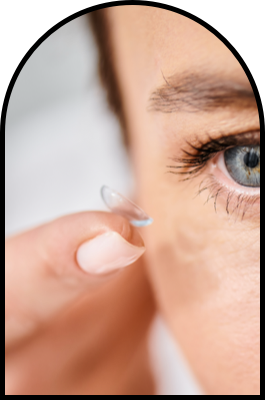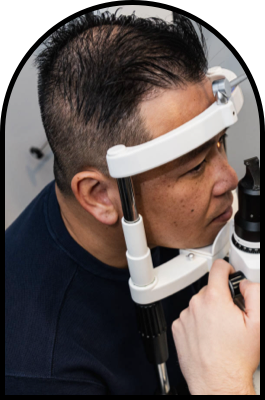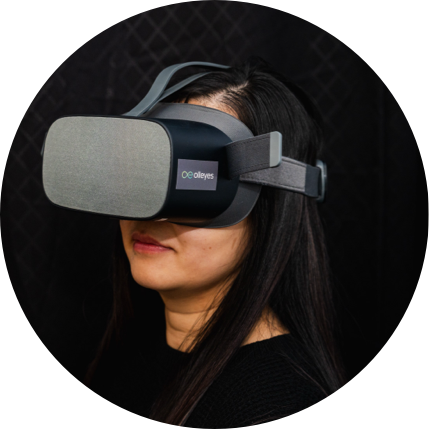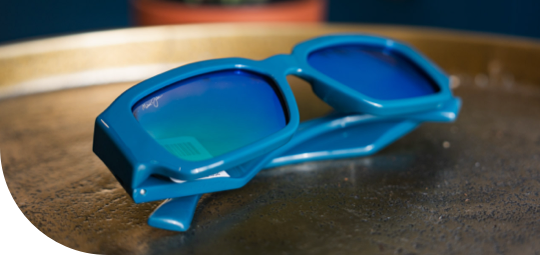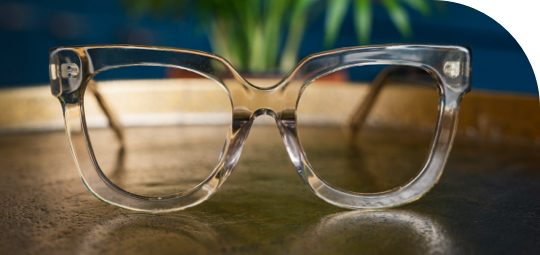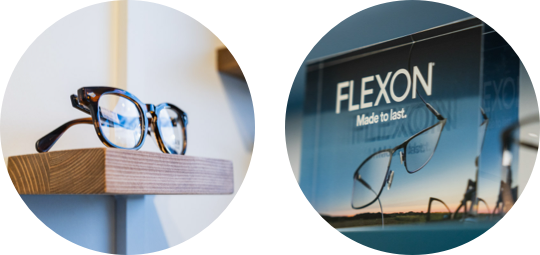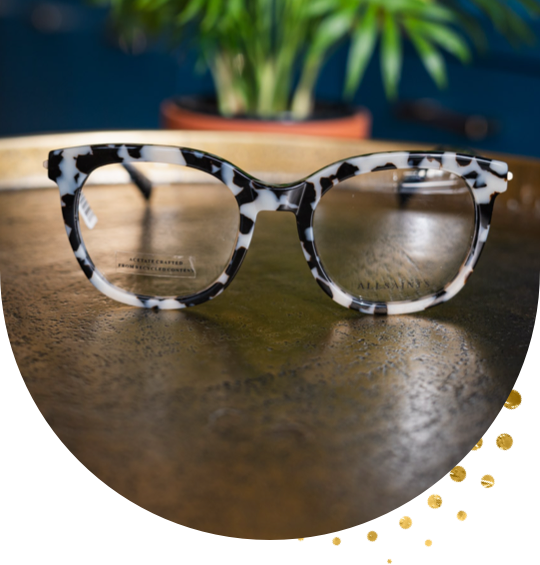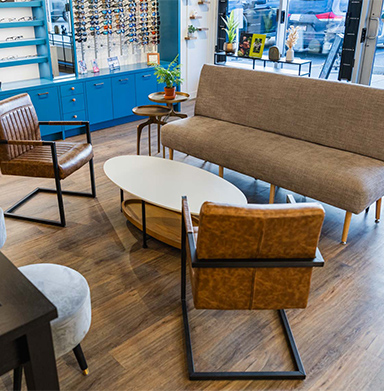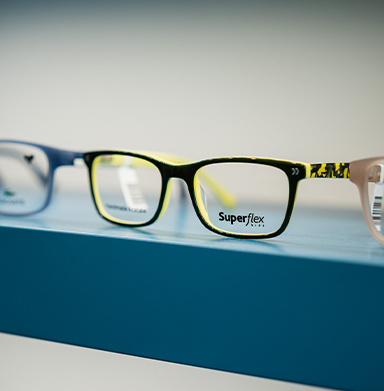When it comes to keeping your vision clear, the right eyewear matters. It means you get clarity and comfort rather than blurriness and discomfort. So how do you pick the right glasses?
Getting prescription glasses means visiting the optometrist, working through several tests, picking out frames, and more. Each step is equally important for making sure your new eyewear meets your unique needs.
How to Tell if It’s Time to Get New Glasses
Vision changes can happen gradually or suddenly. This makes it important to pay attention to the clarity of your vision. Here are some signs that it might be time to book an eye exam:
- Struggling to read small print or text on a screen.
- Frequent headaches, especially during close-up work.
- Blurry vision, either nearby or at a distance.
- Eye strain and overall discomfort.
If these sound familiar, you should visit your optometrist. They can check your prescription, monitor any changes in your vision, and help you find your new eyewear.
What Happens During an Eye Exam?
During an eye exam, we measure more than vision. We also look for any recent changes in your eye health and vision so we can treat potential problems sooner rather than later.
To do so, we work through several tests:
- A visual acuity test checks how clearly you see by using an eye chart.
- A retinoscopy observes how light moves through your eye to detect refractive errors.
- A refraction test fine-tunes your prescription by comparing different lenses.
- Additional checks may examine for eye conditions like glaucoma or cataracts.
We may also perform additional testing, though this depends on unique circumstances.
How to Read a Prescription
Reading a glasses prescription might feel overwhelming at first. The numbers often look confusing—especially if you have no idea what they mean.
Your prescription will include these:
- OD (Oculus Dexter) refers to your right eye, while OS (Oculus Sinister) is your left eye.
- The sphere (SPH) indicates whether you are nearsighted (negative value) or farsighted (positive value).
- Cylinder (CYL) and axis describe the degree and angle of correction required for astigmatism.
- The add value specifies extra magnifying power for reading areas in bifocals or progressive lenses.
If you wear contact lenses, you may notice additional numbers and acronyms. Those refer to the overall shape of your cornea so your optometrist can match lenses to your individual eye.
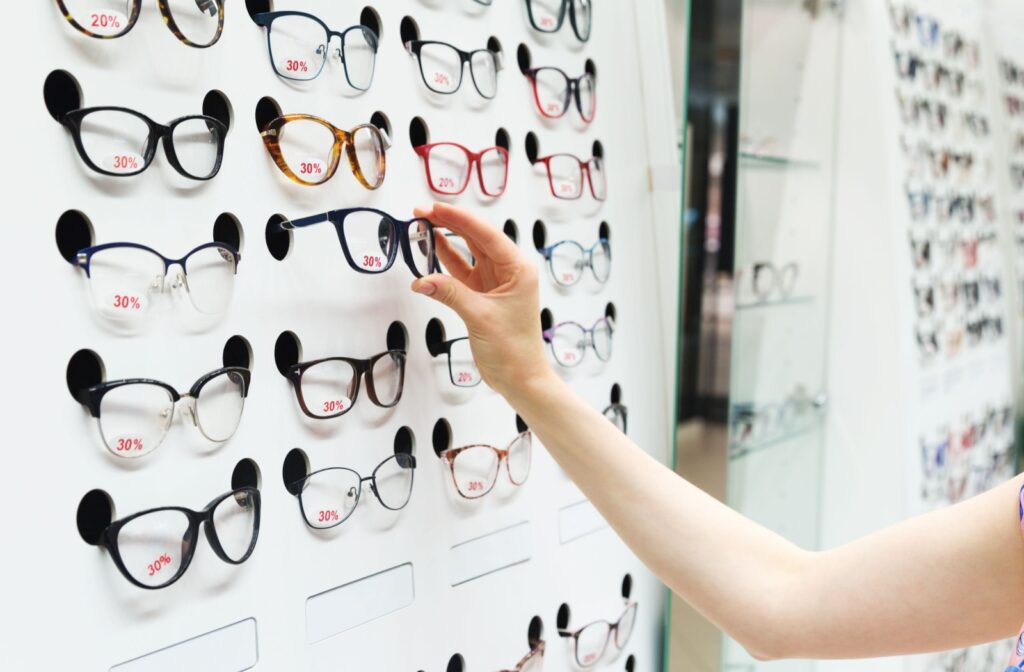
What Frames Are Right for You?
Selecting frames should be comfortable and fun. Make sure you account for several factors, like your face shape, personal style, and everyday needs.
You can generally follow these guidelines:
- For rounder faces, use angular frames to balance out facial features.
- For oval faces, try a mix of round and square frames for a versatile look.
- For square faces, choose rounded or oval frames to soften facial angles.
- For heart-shaped faces, pick wider bottom rims with thin or rimless tops.
Then, you can pair your frames with the right lenses for functionality. Options like anti-reflective coatings reduce glare and enhance visibility during screen time. High-index lenses are lightweight, while special prism lenses can make digital devices more comfortable.
Tips for Taking Care of Glasses
Once you have your new eyewear, remember—you need to take care of them. This maintains their condition, extends their lifespan, and keeps your vision clearer.
So make sure to:
- Clean your glasses daily using a microfiber cloth and a gentle lens cleaner.
- Store them in a protective case when not in use to prevent scratches or damage.
- Avoid placing your glasses face down on any surface to protect the lenses.
- Keep them away from extreme heat, which can warp the frames or damage lens coatings.
- Use both hands to put on or remove your glasses to avoid bending the frames.
- Tighten screws and check for loose hinges regularly to ensure a proper fit.
- Schedule routine professional cleanings and adjustments with your optician.
These steps are simple, and when performed regularly, make a significant difference. If you ever notice pinching, slipping, or discomfort, visit your optometrist to make any needed adjustments.
You Deserve Clear Vision Every Day
Your vision plays an important role in your daily experiences. Properly prescribed glasses combine comfort, style, and functionality to keep your vision clearer. With the right glasses—and regular maintenance—your glasses can support your vision for years to come.If you have any questions, come visit our team at Chestermere Optometry. We can help you through every step of the process and give you the clear, comfortable vision you deserve. Your future perfect glasses await, so book an appointment with us today!




